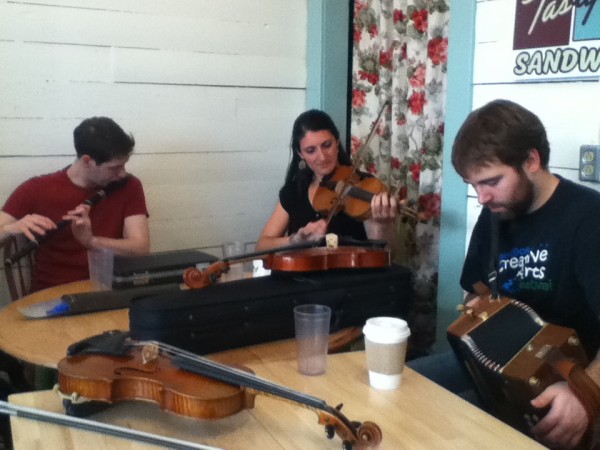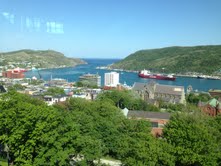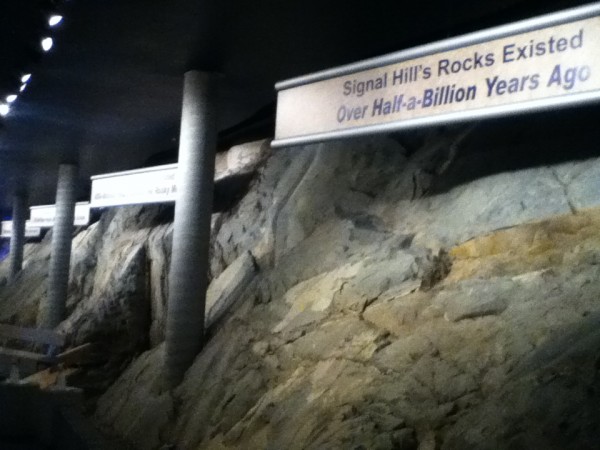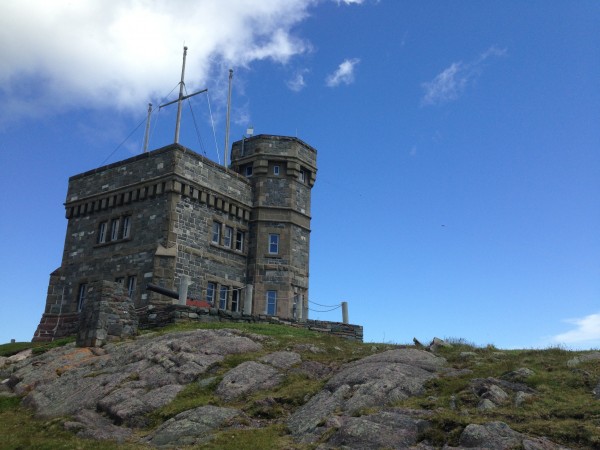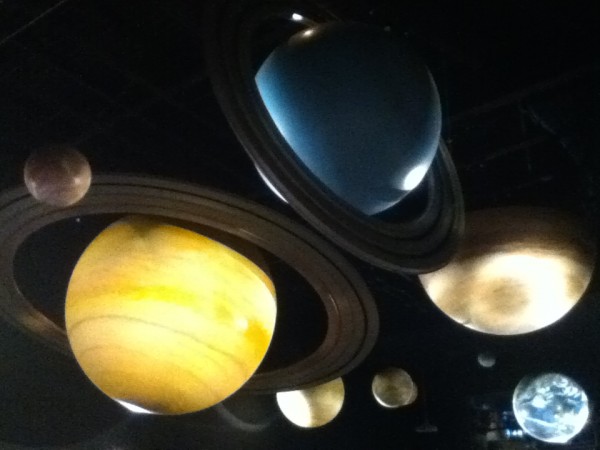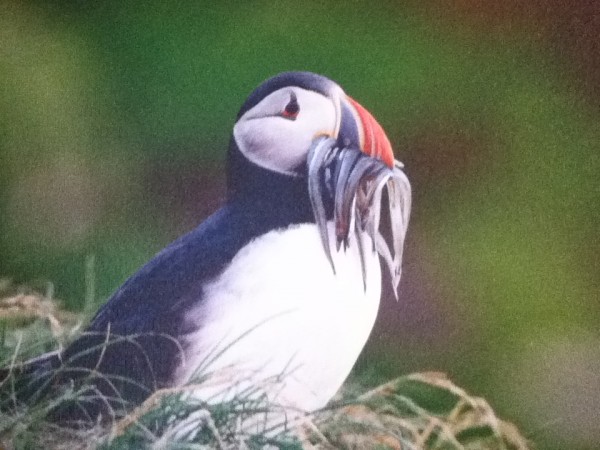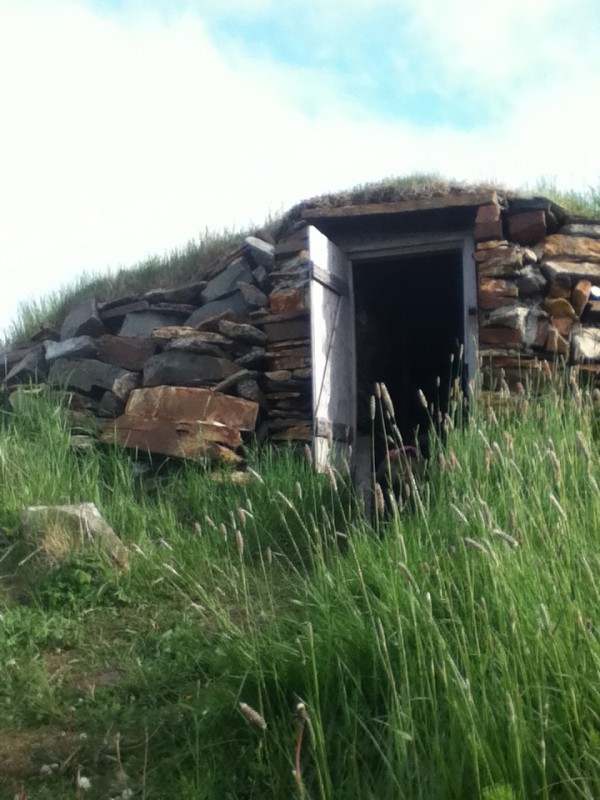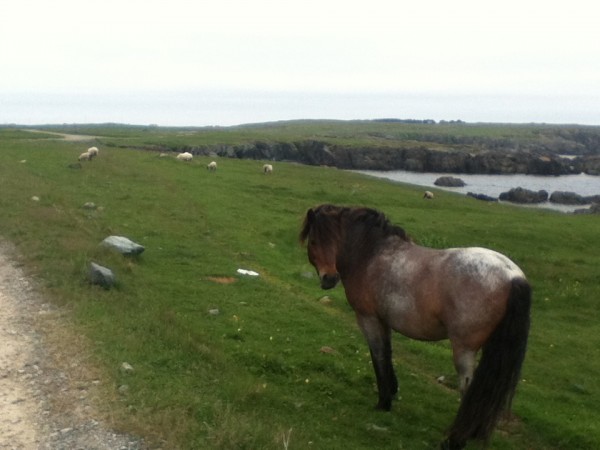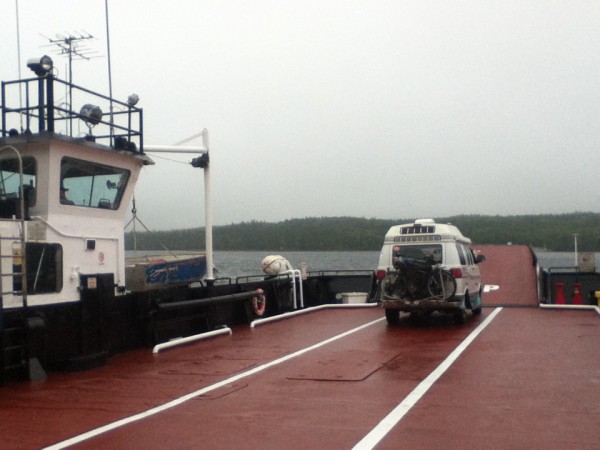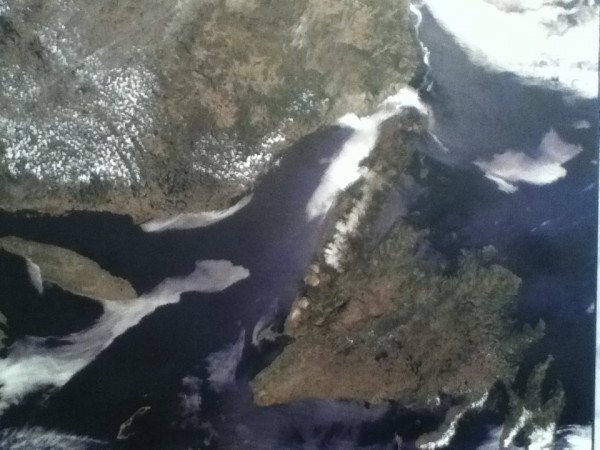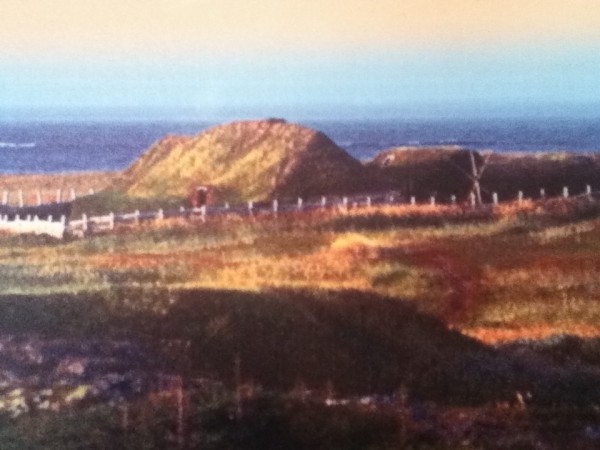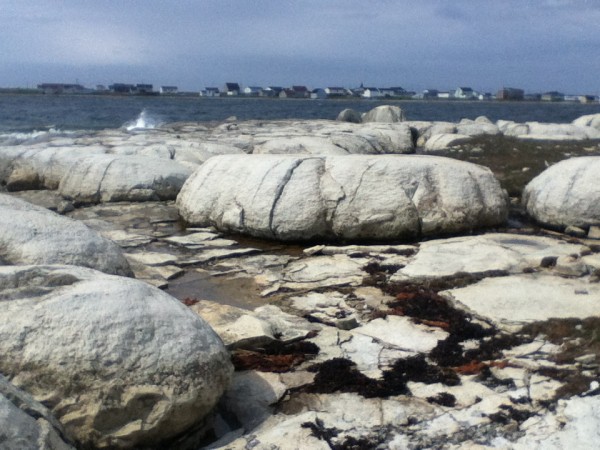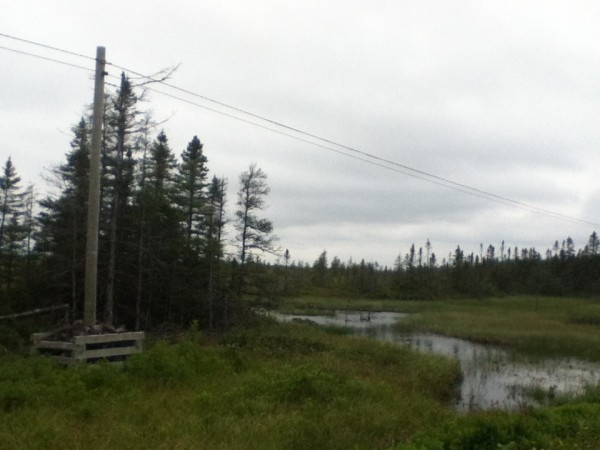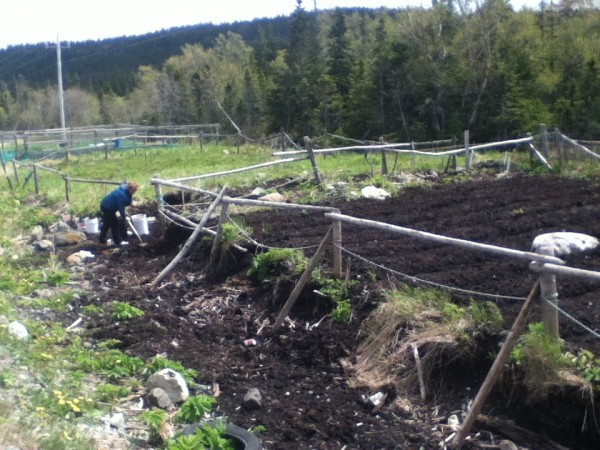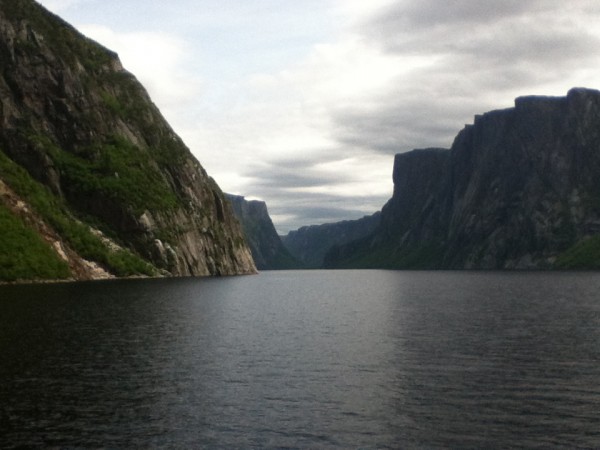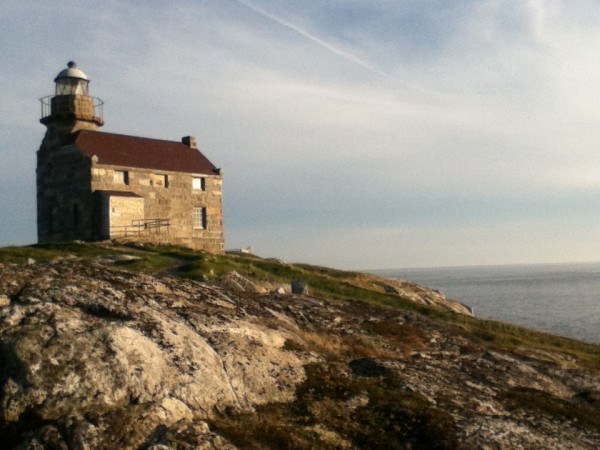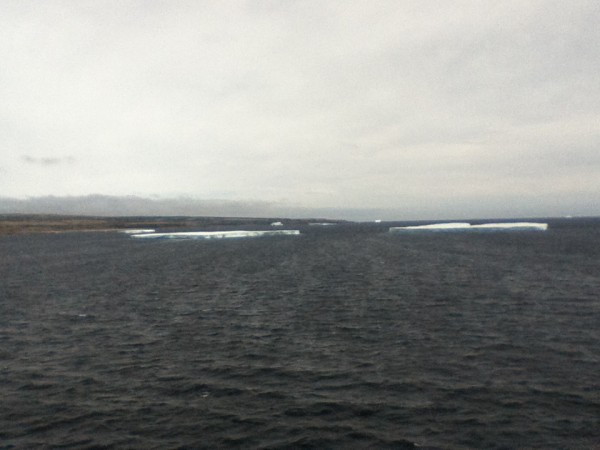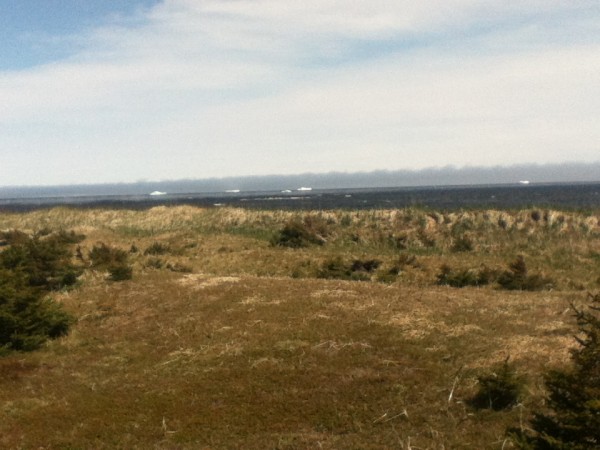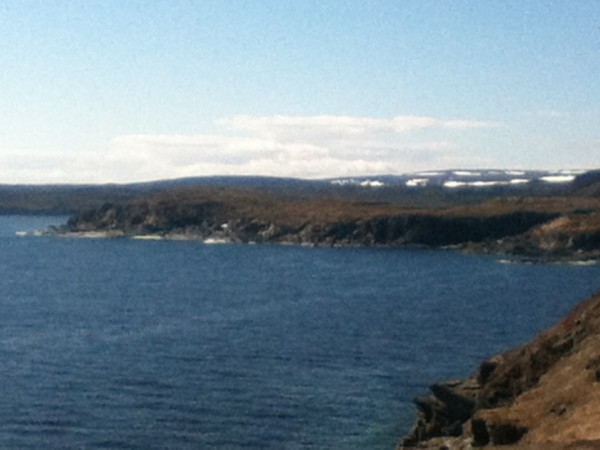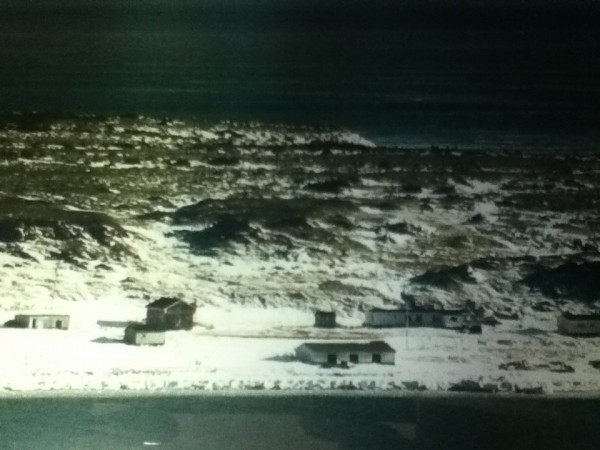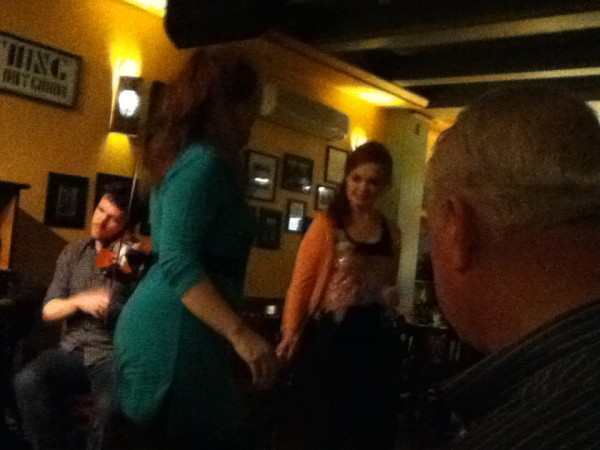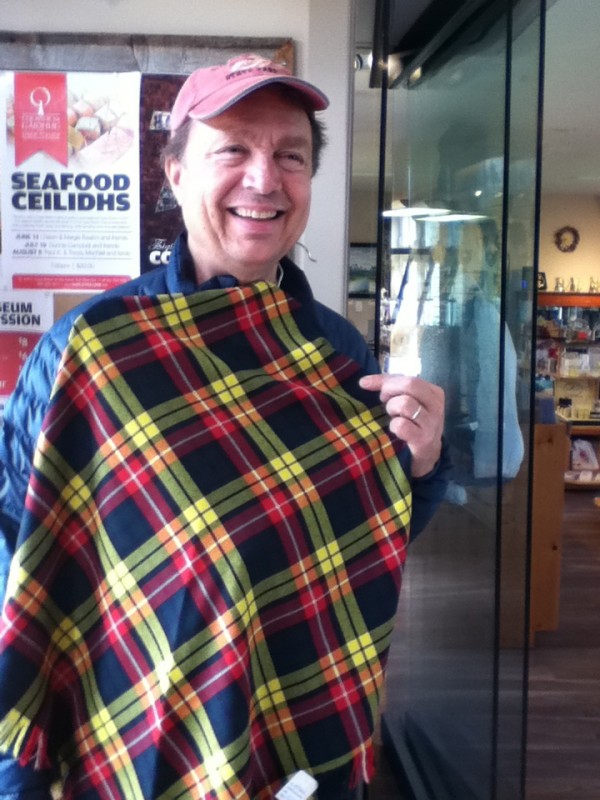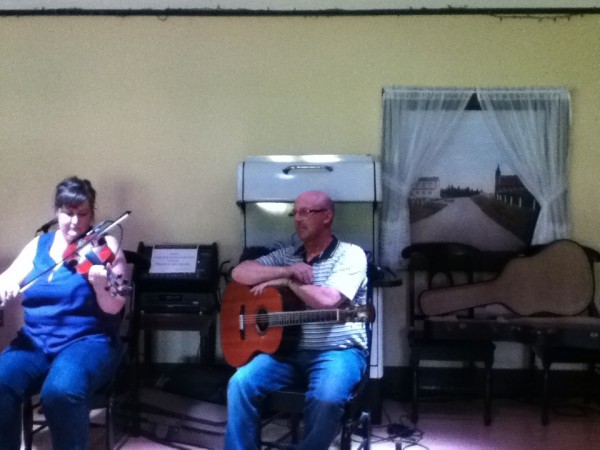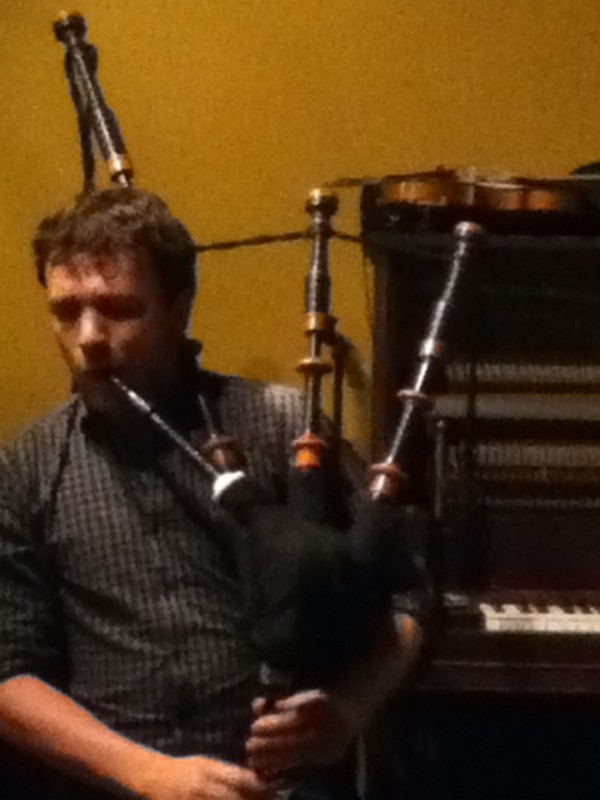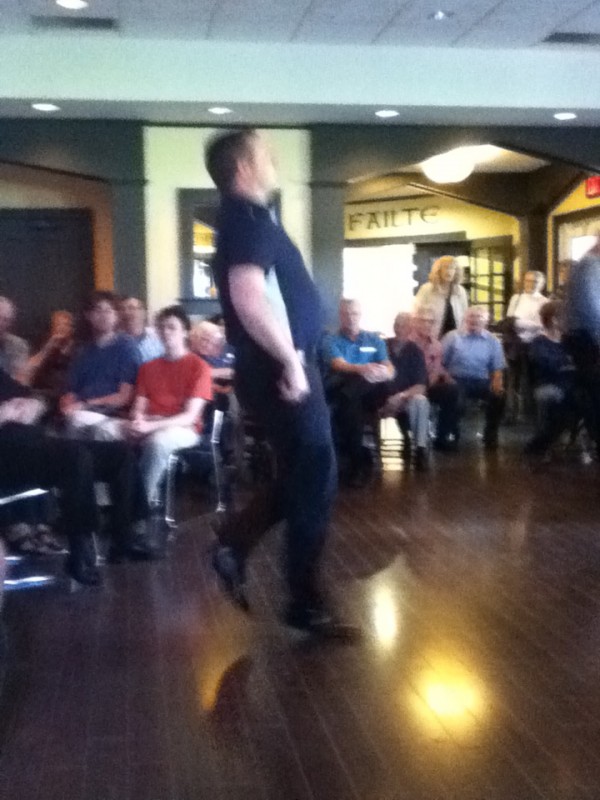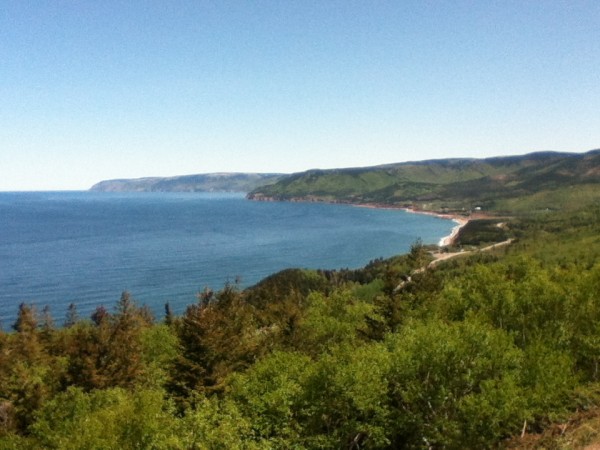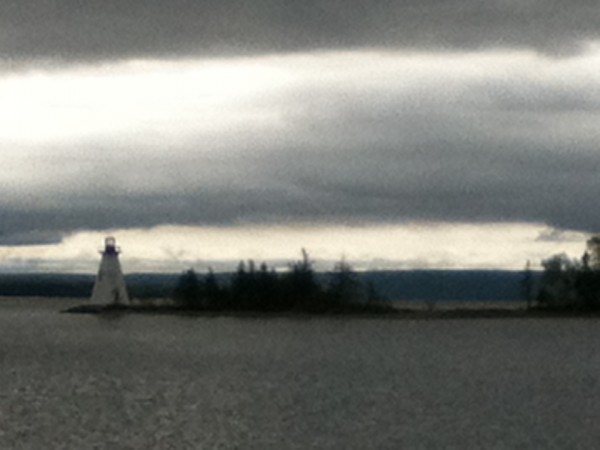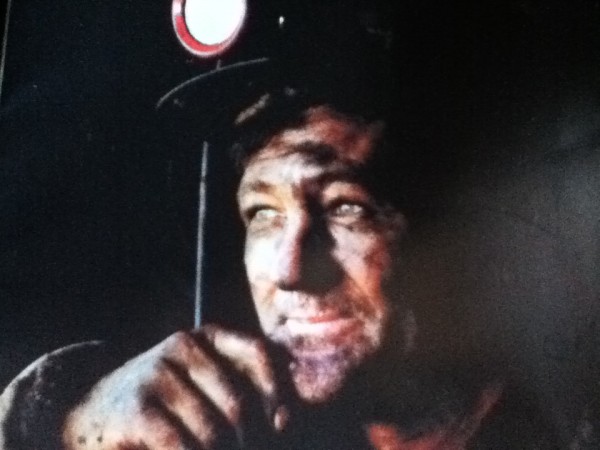The capital, St. John’s, is the oldest English settlement on the North American continent. You can imagine the birthday party they throw for themselves! Add to that the following simultaneous events: 1) the Summer Solstice; 2) the Supermoon; 3) the first warm summery day; 4) a 3 day holiday weekend (Canada’s Discovery Day); 5) the last day of school; and, 6) the humpback whales hanging out for several days at the “Narrows”, the entry to the Bay so their low spout and big splashy tails can be seen from town….party down!
At 5 venues in the city, four times a day, throughout the week, there was free Irish Trad music, pocket opera, ethnic dance presentations, community dances…and did I mention free cupcakes? We had to hustle to catch the free acts, along with a wonderful production of Mozart’s Magic Flute, and the exhibits at “The Rooms”, a gorgeous museum space. We loved the Roaring 20’s exhibit, as shown in gorgeous period shoes. The image below is The Narrows from the on-site cafe at The Rooms. We also love our new friends at “Tango On The Edge”, where we danced at two Practicas and took lessons in a private home.
Still, nothing was more unique and outstanding than the Johnson Geo Center, a huge geothermal building, built deeply under ground; one exhibition hall is faced by the oldest rocks on the planet.
Just slightly uphill is Signal Hill, where flag communication ruled until the first transatlantic wire was received by Marconi here, chosen because Ireland and St. John’s present the shortest distance between the two continents.
I love exhibits that remind me how inconsequential I am, how briefly humans have been around, how little time we have to live a life. Sand grains in clear columns reach from the exhibition hall 5 stories to the surface and further up to the top of the sculpture 26 feet high to show the age of the universe, one year for each grain. To its side stands an 8 ft. tall sand column representing the first life form on the earth. Finally a knee high, nearly empty, clear column with a handful of sand representing the years since our ancestors first “peopled” the earth, and to the side, a skeletal copy of “Lucy”, our oldest humanoid skeletal remains found in Africa. It is a mind tweek like the picture of the Milky Way, with a pointer to a dot way out on the edge, “You are here”. Our response: RUN! quickly back to the Rocket Bakery for a slice of the Chocolate Ganache Cake…a la mode, of course.
Charming, sophisticated, and tolerant, St. John’s feels like a pint-sized Santa Monica 40 years ago. They enjoyed celebrating with us the U.S. Supreme Court’s wisdom in protecting the civil rights of ALL of our citizens. Canada has given same sex couples marital benefits for years. The population (100,000) is educated, predominantly middle class, disturbingly white, and happily, extremely respectful of pedestrians. However, the darker side of this lovely place is that real estate prices have skyrocketed, pushing students, the working poor, and fixed income elderly out of the city. We loved this gorgeous island and know we must return as we didn’t even do any get around to biking or kayaking.
With over 700 distinct breeding sites for seabirds in Newfoundland, our hikes were extraordinary. No need to jump a boat to see Gannet or Puffin colonies. Walk out a promontory at Cape Bonavista or Elliston to see 400 breeding pairs of Puffins only 50 feet away on their island aerie.
While you’re there, walk among 135 root cellars in town, making this the world root cellar capital. Nearby, fat and shaggy ponies wander among the sheep. Haven’t had enough whales yet? Take the ferry between Newfoundland and Nova Scotia to see pods of minke whales on the bow. Yep, we will be back…after we go everywhere else!
We have to saunter on to Halifax to celebrate Canada Day (July 1st…celebrated like our July 4th) with the Nova Scotia International Tatoo Parade , and a month “stop-over” in Halifax. We are looking forward to leaving the Roadtrek parked, as we house-share with a dog-friendly family, and enjoy the cooler summer weather…while the U.S. once again swelters in abnormally high summer heat. Happy Canada Day!


